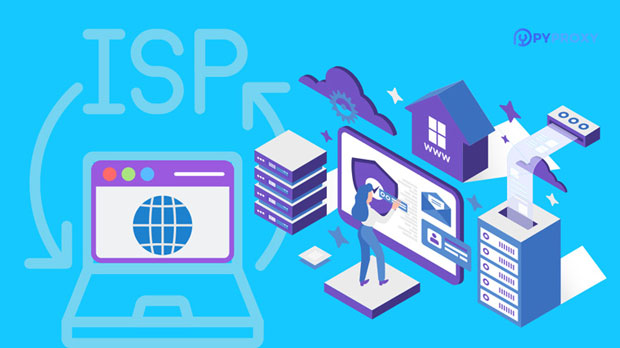The increasing demand for automated and scalable solutions in today’s digital ecosystem has led many companies to offer API integration services. One such company, PYPROXY Proxy Company, has raised questions about its support for API integration and its suitability for developers. In this article, we will explore whether Pyproxy Proxy Company offers API integration, how it benefits developers, and whether it is a good fit for businesses and technical professionals seeking reliable proxy services. By the end of this article, you will have a deeper understanding of Pyproxy’s capabilities and how they align with your development needs. Overview of API Integration in Proxy ServicesBefore delving into Pyproxy’s capabilities, it is essential to understand the role of API integration in proxy services. API (Application Programming Interface) integration allows developers to connect different software systems, enabling them to communicate and work together seamlessly. In the context of proxies, API integration helps developers automate the process of proxy rotation, monitoring, and configuration management, allowing businesses to scale their operations more efficiently.For companies that rely on proxies for web scraping, data gathering, or bypassing geographical restrictions, API integration simplifies the entire process. Through APIs, developers can programmatically access proxy services, manage them in real-time, and ensure continuous and secure data flow.Does Pyproxy Proxy Company Support API Integration?Pyproxy Proxy Company offers a robust solution for proxy management, and yes, it supports API integration. The company provides developers with comprehensive tools to manage proxy pools, rotation systems, and authentication protocols via an easy-to-use API interface. This makes it easier for businesses to integrate proxy functionality into their existing systems, eliminating the need for manual configuration or intervention.One of the key features of Pyproxy’s API integration is its flexibility. Developers can customize the proxy settings according to their unique needs, whether it’s for local or international web scraping, managing large-scale data extraction, or ensuring privacy and security while accessing the internet. The API also supports a wide range of protocols, making it adaptable to various development environments and use cases.Key Features of Pyproxy’s API IntegrationLet’s break down some of the essential features of Pyproxy’s API integration that make it a suitable choice for developers:1. Proxy Pool Management: Pyproxy’s API allows developers to manage proxy pools efficiently, providing the flexibility to rotate IP addresses and ensure anonymity. Developers can set up automatic rotation, customize the number of proxies to use, and configure the proxy pool size according to specific requirements.2. Real-Time Monitoring: With Pyproxy’s API, developers can monitor proxy performance in real-time, checking the status of each proxy, response times, and success rates. This feature is particularly valuable for web scraping tasks where efficiency and reliability are critical.3. Geo-Targeting Capabilities: The API supports geo-targeting features, allowing businesses to direct their proxy traffic through specific countries or regions. This is useful for companies that need to access region-specific data or want to perform region-based testing of their websites.4. Authentication Management: The API simplifies authentication processes by supporting multiple authentication methods such as IP-based authentication, username/password combinations, and token-based systems. This enhances security and ensures seamless integration with your internal systems.5. Scalability: One of the standout features of Pyproxy’s API is its scalability. Whether you need to manage hundreds of proxies or thousands, the API can handle large-scale operations without compromising performance. Developers can also automate the proxy management process, freeing up valuable time for other development tasks.Why Is Pyproxy’s API Integration Beneficial for Developers?The primary benefit of API integration for developers lies in the ability to automate tasks and manage proxy resources with greater efficiency. Below are some additional advantages that make Pyproxy a suitable choice for developers:1. Increased Efficiency and Time-Saving: Manual proxy configuration can be time-consuming and error-prone. With API integration, developers can automate proxy rotation, monitoring, and performance tracking, saving time and reducing the risk of human error.2. Seamless Automation: The ability to integrate proxies directly into your code allows for seamless automation of web scraping or data gathering tasks. Developers can schedule tasks, implement retries, and even handle errors programmatically, ensuring smoother operations.3. Cost-Effective: By automating proxy management, companies can reduce the need for manual intervention, which often leads to increased operational costs. The API allows businesses to optimize their proxy usage, ensuring that resources are used efficiently and costs are minimized.4. Customization and Flexibility: Developers have the freedom to customize their proxy configurations according to their specific use case. Whether they need specific IP addresses, faster response times, or more geographical options, Pyproxy’s API provides a great deal of flexibility.How Does Pyproxy Fit into Developers’ Workflow?Pyproxy’s API is designed to be developer-friendly, with clear documentation, easy-to-understand endpoints, and well-defined responses. The following points demonstrate how Pyproxy integrates into a developer’s workflow:1. Simple Integration Process: The API provides a straightforward integration process with minimal setup, ensuring that developers can get up and running quickly. The code examples and clear API documentation make it easy to integrate proxy functionality into applications.2. Cross-Platform Compatibility: Pyproxy’s API is built to work across different platforms and programming languages, including Python, Java, and Node.js. This cross-platform compatibility ensures that developers can use the API regardless of their preferred programming environment.3. Error Handling and Support: The API offers comprehensive error handling mechanisms, ensuring that developers can easily identify and resolve issues. In case of any technical challenges, Pyproxy provides responsive customer support to assist with troubleshooting.Is Pyproxy Suitable for Small and Large-Scale Projects?The versatility of Pyproxy’s API makes it suitable for both small and large-scale projects. Whether you are a small business owner or a large corporation, Pyproxy’s proxy services can scale to meet your needs. For small-scale operations, developers can take advantage of the straightforward API to manage a smaller proxy pool, while larger enterprises can utilize Pyproxy’s scalable infrastructure to handle more complex proxy requirements.For businesses that require high volumes of data scraping or geographic-specific traffic management, Pyproxy’s API can be particularly advantageous. The ability to automate large-scale proxy management without compromising on performance or security makes it an excellent solution for companies in need of robust, enterprise-grade proxy services.Conclusion: Is Pyproxy the Right Choice for Developers?In conclusion, Pyproxy Proxy Company offers a comprehensive, flexible, and developer-friendly API integration that caters to the needs of developers across various industries. Whether you are looking for a proxy service to power your web scraping tasks, enhance data privacy, or manage large-scale operations, Pyproxy’s API provides the tools to do so with ease. With its scalability, real-time monitoring, and customization features, Pyproxy is an excellent choice for developers who need reliable, high-performance proxy services.If you are a developer looking for an efficient, scalable, and secure proxy solution, Pyproxy’s API is worth considering. Its seamless integration process and advanced features make it an ideal choice for both small-scale and large-scale projects. By leveraging Pyproxy’s capabilities, developers can focus on building their applications while ensuring that their proxy services are running smoothly and securely in the background.
Oct 16, 2025



































































